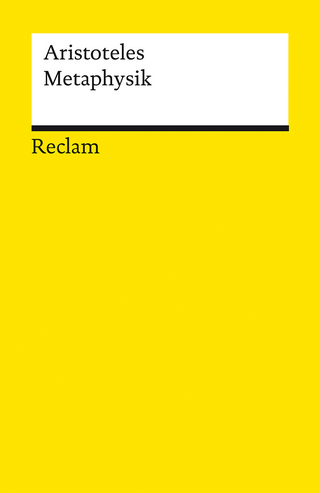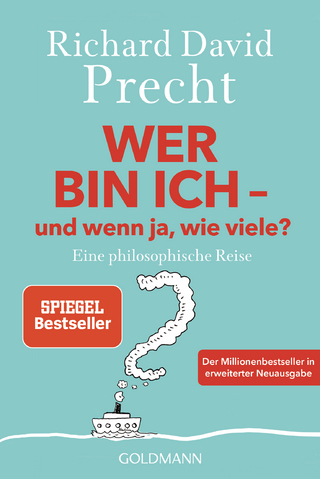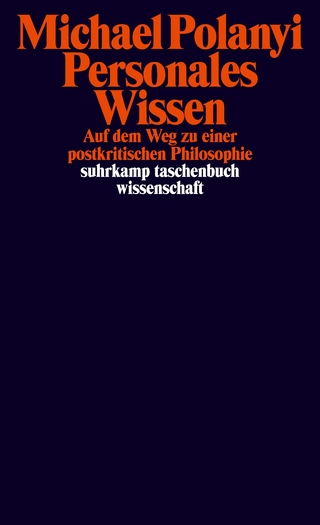
What Is, and What Is In Itself
A Systematic Ontology
Seiten
2024
Oxford University Press (Verlag)
978-0-19-890951-4 (ISBN)
Oxford University Press (Verlag)
978-0-19-890951-4 (ISBN)
This long-awaited book by one of the world's leading philosophers offers a systematic account of kinds of being, ways in which things can be or can fail to be.
This work is ''a systematic ontology.'' Ontology is the study of being as such, and a systematic ontology is an account of the most fundamental ways of being something or other - of what they are and of how they are related to each other. The questions it pursues are not primarily about what causes things, but about what things are or consist in - though causal questions cannot be totally avoided. The title of the work, What Is, and What Is in Itself, marks the most important distinction in ways of being. What is includes everything there is, but not everything there is included in what is in itself. The first five chapters of the book define and examine the ways of being: in chapters 1 and 2, being actual or existing, or even just being something without existing or being actual; in chapter 3, being an intentional object, and perhaps a merely intentional object; in chapter 4, relations between things and their properties; and in chapter 5, being a thing in itself. Chapter 6 discusses whether only conscious beings are things in themselves, and suggests an affirmative answer. Chapter 7 discusses the epistemology of ontology. Chapters 8 and 9 discuss issues about thisness and identity. And chapters 10 and 11 discuss mainly occasionalist and panentheist answers to questions about the causal unity of the universe.
This work is ''a systematic ontology.'' Ontology is the study of being as such, and a systematic ontology is an account of the most fundamental ways of being something or other - of what they are and of how they are related to each other. The questions it pursues are not primarily about what causes things, but about what things are or consist in - though causal questions cannot be totally avoided. The title of the work, What Is, and What Is in Itself, marks the most important distinction in ways of being. What is includes everything there is, but not everything there is included in what is in itself. The first five chapters of the book define and examine the ways of being: in chapters 1 and 2, being actual or existing, or even just being something without existing or being actual; in chapter 3, being an intentional object, and perhaps a merely intentional object; in chapter 4, relations between things and their properties; and in chapter 5, being a thing in itself. Chapter 6 discusses whether only conscious beings are things in themselves, and suggests an affirmative answer. Chapter 7 discusses the epistemology of ontology. Chapters 8 and 9 discuss issues about thisness and identity. And chapters 10 and 11 discuss mainly occasionalist and panentheist answers to questions about the causal unity of the universe.
Introduction and Overview
1: Actuality
2: Existence
3: Intentional Objects, Existent, and Nonexistent
4: Things and Properties
5: Intrinsic Reality, Relationality, and Consciousness
6: Reality and the Physical
7: The Epistemology of Being
8: Thisness
9: Identity, Time, and Self
10: God and the Causal Unity of the World
11: God and Possibilities
| Erscheinungsdatum | 03.01.2024 |
|---|---|
| Verlagsort | Oxford |
| Sprache | englisch |
| Maße | 153 x 230 mm |
| Gewicht | 364 g |
| Themenwelt | Geisteswissenschaften ► Philosophie ► Metaphysik / Ontologie |
| Geisteswissenschaften ► Religion / Theologie | |
| ISBN-10 | 0-19-890951-9 / 0198909519 |
| ISBN-13 | 978-0-19-890951-4 / 9780198909514 |
| Zustand | Neuware |
| Informationen gemäß Produktsicherheitsverordnung (GPSR) | |
| Haben Sie eine Frage zum Produkt? |
Mehr entdecken
aus dem Bereich
aus dem Bereich
eine philosophische Reise
Buch | Softcover (2024)
Goldmann (Verlag)
14,00 €
Auf dem Weg zu einer postkritischen Philosophie
Buch | Softcover (2023)
Suhrkamp (Verlag)
38,00 €


